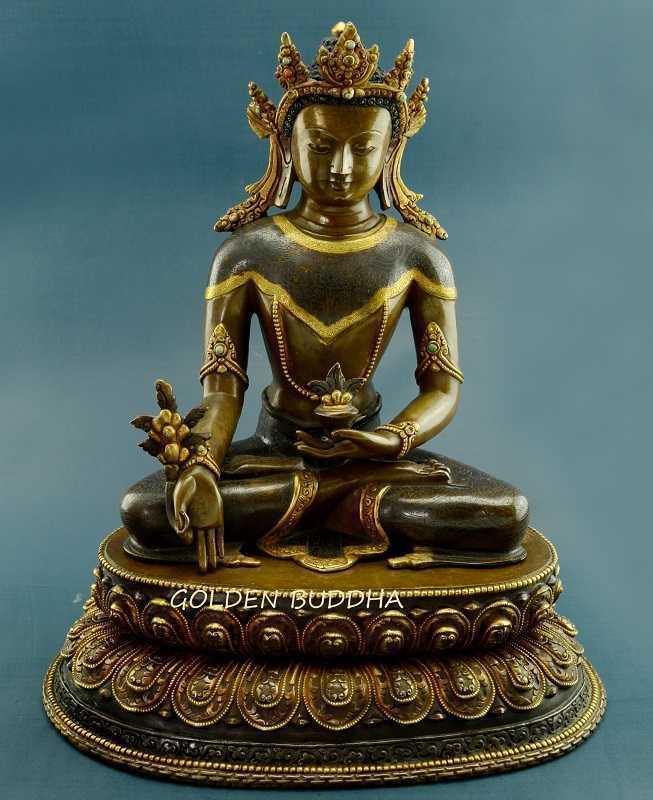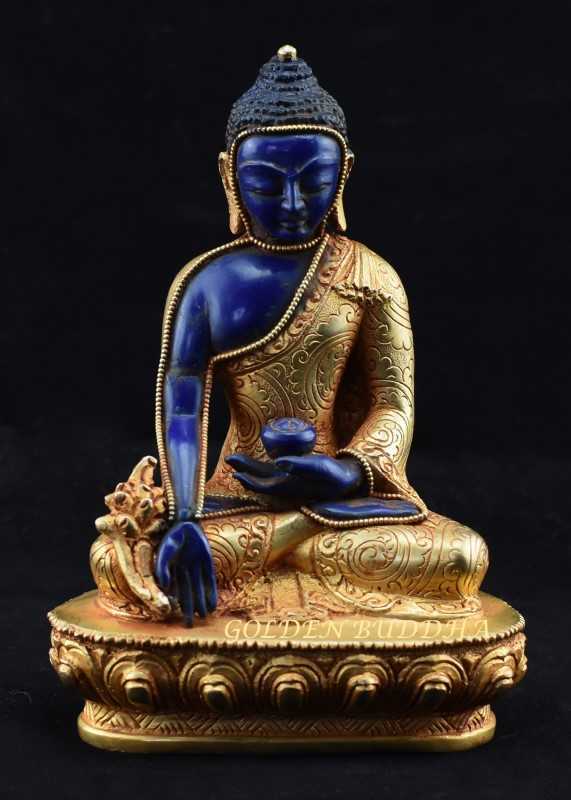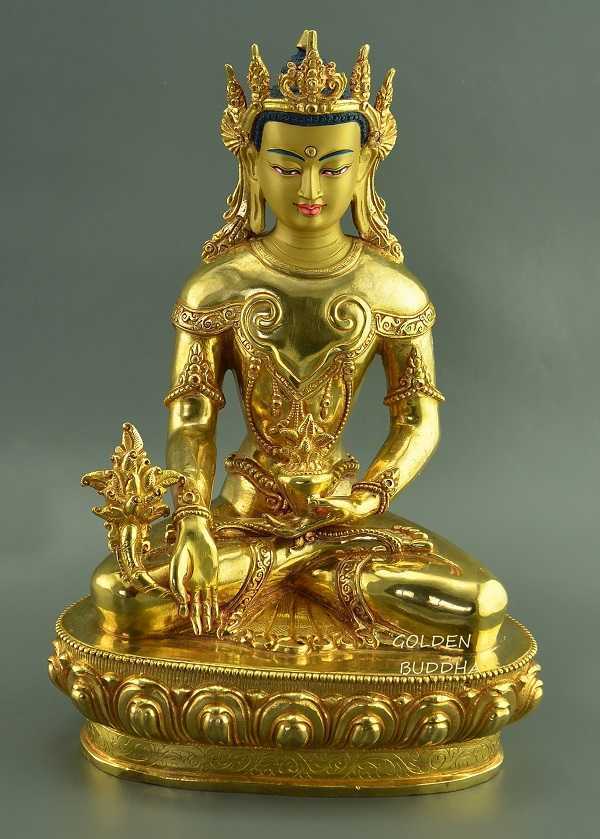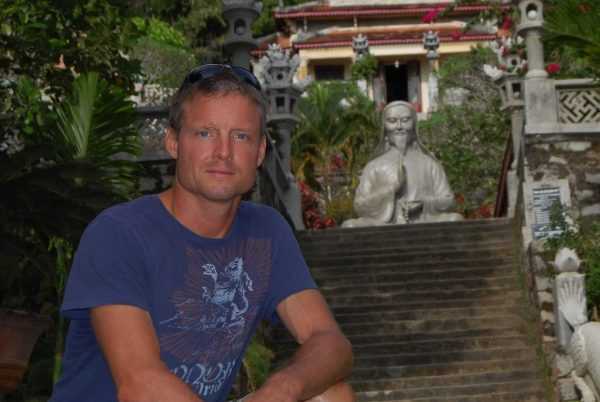Medicine Buddha statues depict a popular Mahayana Buddhist deity with the power to cure all suffering. The source of his healing power was first introduced in the “Sutra of the Medicine Buddha”. Also known as Bhaisajyaguru, the Medicine Buddha has identified ignorance as the root of all sickness and has prescribed the Dharma as the cure.
Although the origin of Medicine Buddha is in India, he would undergo a significant transformation as the Mahayana texts traveled along the Silk Road to China. As a result, following the path of the Medicine Buddha Sutra along the ancient Silk Road unveils the evolution of the Medicine Buddha statues meaning.
The journey of Medicine Buddha statues followed the Buddhist scriptures from the place of origin in India, to East Asia and then to Tibet, Nepal and Bhutan. It was an incredible journey that now includes countries worldwide. This includes North America, all of Europe the Americas and more.
Learn the true meaning of Medicine Buddha below and gain inspiration. When you purchase a Medicine Buddha statue online you can bring his blessings and good karma into your own home.
Facts about Medicine Buddha Statues
- Origins of the Medicine Buddha Sutra
- What is “Lapis Lazuli”?
- The Pure Land of Medicine Buddha
- Medicine Buddha Statue Meaning
- 12 Great Vows of Medicine Buddha
- How to use the Medicine Buddha Mantra
- 108 Mantra Recitations can cure any Illness
- The Medicine Buddha Trinity
- Buy Medicine Buddha Statues Online
Origins of the Medicine Buddha Sutra
Evidence of birch bark manuscripts containing the Medicine Buddha Sutra were first discovered at a Mahasamghika Monastery near Bamiyan, Afghanistan. These texts dated back to the 7th century ACE at the time of the ancient silk road.
The Chinese monk Xuanzang had traveled the ancient Silk Road near this location while bringing the Buddhist texts to China. Additionally, Xuanzang was translating the texts into Chinese during his travels. As a result, archeologists identified Xuanzang as the source of the Medicine Buddha manuscripts found there.
The strenuous efforts of Xuanzang would result in the formal introduction of Medicine Buddha to East Asia. Indeed, Medicine Buddha was well received there and accepted alongside Shakyamuni Buddha and Amitabha Buddha. Additionally, the appearance of auspicious blue Medicine Buddha statues and paintings soon followed.

The Meaning of “Lapis Lazuli” to Medicine Buddha
While traveling the Silk Road, the Medicine Buddha image became affiliated with a mysterious blue stone called “lapis lazuli”. Indeed, the world’s richest source of lapis lazuli is in Northern Afghanistan near the Mahasamghika Monastery.
Evidence of the first lapis lazuli mines in the area date back to the 7th century BCE, over 1000 years before Xuanzang traveled there. Strange coincidence? Yes indeed, the introduction of lapis lazuli into the Medicine Buddha Sutra occurred somewhere along the ancient silk road. Furthermore, the location of the lapis lazuli mines clearly indicates where this may have happened.
Perhaps while practicing meditation in the mountains around Bamiyan, Xuanzang had powerful visions of blue Medicine Buddha. Indeed, secluded mountain caves make ideal places for deep meditation practice. Additionally, lapis lazuli could have tinted the caves with their deep blue color. As a result, lapis lazuli became deeply integrated into the Medicine Buddha Sutra.

The Pure Land of the Medicine Buddha
After achieving Buddhahood, the Medicine Buddha received his own Pure Land called “Pure Lapis Lazuli”. In the pure land of Medicine Buddha, the ground is made from the pure lapis lazuli stone. As a result, the deep blue light of lapis lazuli radiates over tall buildings, palaces and pavilions made of the seven treasures.
Indeed, Medicine Buddha vowed that after he attained supreme enlightenment “my body, inside and out, will radiate far and wide the clarity and flawless purity of lapis lazuli. This body will be adorned with superlative virtues and dwell peacefully in the midst of a web of light more magnificent than the sun or moon. The light will awaken the minds of all beings dwelling in darkness, enabling them to engage in their pursuits according to their wishes.”
Medicine Buddha Statue Meaning
The primary Medicine Buddha mudra is the Varada or “gift giving” mudra. The Varada mudra is depicted by placing the right hand over the right knee with palm open and facing outwards. As a result, it acknowledges that Medicine Buddha has given his healing power to sentient life.
Furthermore, Medicine Buddha statues depict him holding a sprig of the myrobalan plant in between the thumb and index finger of the same hand. The myrobalan plant was used in ancient Ayurvedic medicine to cure eye disease, infection and skin disease, including leprosy. Additionally, it clears mind obscurations and it also gives long life.
In the left hand of the Healing Buddha statue there is a lapis lazuli medicine bowl filled with the three nectars. These three nectars eliminate the poisons of greed, hatred and ignorance. Additionally, Medicine Buddha sits in full lotus pose on a lotus pedestal. He also wears the robes of a monk and has all the signs of a Buddha.

12 Great Vows
The Medicine Buddha Sutra tells the story of the Medicine Buddha as a Bodhisattva yearning for enlightenment. As a Bodhisattva, Medicine Buddha made 12 great vows to the faithful who only need say his name.
In other words, taken directly from the sutra “Manjushri, when the World-Honored Medicine Buddha was treading the Bodhisattva path, he solemnly made 12 great vows to grant sentient beings whatever they desired”.
Indeed, devotees who recited the Medicine Buddha prayer (his name or mantra) could cure all forms of physical, mental and spiritual suffering. Additionally, the Medicine Buddha goes on to promise devotees riches and even redemption for use of witchcraft with evil intent.
Recitation of the Medicine Buddha Mantra
Faithful recitation of the Medicine Buddha mantra invokes the healing powers of Medicine Buddha practice. As a result, if recited with pure intent and sincerity devotees can transfer the karma of Medicine Buddha to themselves or others. Indeed, it is good karma that has the power to cure all suffering.
“oṃ bhaiṣajye bhaiṣajye bhaiṣajya-samudgate svāhā.”
A description of effective Medicine Buddha practice is provided in the Medicine Buddha Sutra. The practitioner enters a “de facto state of samadhi” (deep concentration) by repeating the Medicine Buddha mantra with absolute sincerity, faith and selflessness. As a result, they will enter a state of deep concentration.
However, the key to obtaining the Medicine Buddha mantra benefits is faith – “efficacy lies in the complete absence of doubt on the part of the practitioner.” Indeed, by entering a state of deep concentration the practitioner has entered the realm of Buddhas and Bodhisattvas. If so, “How then can disease or calamity defeat him”?
Cure Illness with 108 Recitations
The Medicine Buddha Sutra instructs practitioners to recite the mantra over the patient’s food or water “108 times on his behalf”. As a result – “Once they have consumed the food or drink, the illness and suffering will at once disappear.” Additionally, each recitation must be completed with utmost sincerity, in complete absence of doubt. When the 108 mantra recitations are complete, gently blow a wisp of breath onto the glass of water or food.
Next, the patient drinks the glass of water or eats the food with the hope of removing spiritual, mental or physical ailments. As a result, the good karma derived from the Medicine Buddha practice will be transferred.
Indeed, testimonials of the efficacy of Medicine Buddha practice abound. Additionally, mantra recitations completed by groups of people can enhance the potency of Medicine Buddha practice. If so, the karma effects are amplified proportionally.
The Three Statues (Trinity)
Each statue in the Medicine Buddha statues trinity has a special symbolism. The Buddha Shakyamuni represents the “basic Buddha principle”, and he is the Buddha of our time. Additionally, Medicine Buddha is the protector of the eastern direction (paradise).
As the protector of the eastern realm, Medicine Buddha guards sentient life, strengthens their health and protects them from untimely death. Additionally, Amitabha Buddha represents his Western Pure Land of Bliss – Sukhavati. He waits in his pure land to protect devotees after their inevitable death in the earthly realm.
Ideally, the combination of earthly and heavenly peace will result in “ultimate peace, happiness and liberation” – Nirvana.
~Sutra of the Medicine Buddha by Dharma Master Hsuan Jung, Minh Thanh, P.D. Leigh~
Buy Medicine Buddha Statues Online
The country of Nepal has long been the workshop that created the best Medicine Buddha statues for the Tibetan Buddhist monasteries. Indeed, for many centuries the Nepali artisans have perfected their craft. As a result, it is now possible to bring the best Medicine Buddha statue into your own home.
My local partners and I have been working with the best Nepali artisans for 3 generations. We are well integrated locally which allows you to benefit from the best possible price and most efficient creation of your statue. Rest assured, you will receive the highest quality.
Each statue is handcrafted using traditional methods. Therefore, your statue will display unsurpassed fine details throughout, from the top of the head to the base of the platform. In addition, each statue is finished in 24k gold and face painted with real gold. Your statue will display lifelike qualities and inspire all those who see it.
Last but not least, each statue is certified by the Department of Archaeology in Kathmandu Nepal before shipping. Your will receive the best Medicine Buddha statue within 3-7 days. Express shipping worldwide is included in the listing price.


